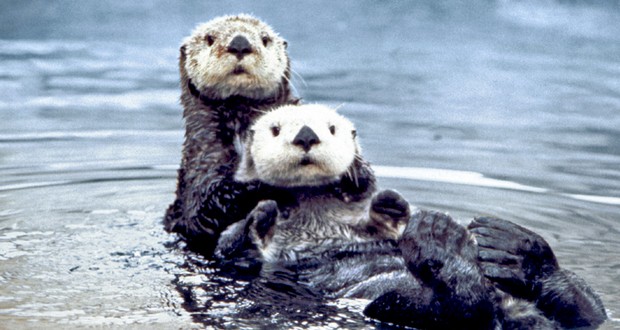11Sea otters

Sea otters have a pouch where they store their favorite rock. Some believe a rock may be so treasured, it's passed down from generation to generation.
12Squirrels

Squirrels play an important part in the ecosystem by spreading a fungus that trees need to survive. They also lose about 25% of the nuts they bury.
13Arctic hare

The almost perfectly spherical shape and prolonged stillness of a huddled Arctic hare are part of its winter strategy for keeping warm. Hares assume this posture when they finish feeding, tucking extremities in tightly in order to conserve warmth by folding their tails down between their hind legs.
14Ninja slug

The "ninja" slug is a recently discovered, long-tailed slug found in the mountains in Malaysia. It shoots "love darts" at potential mates which pierce & inject the proper hormones that increase its chance of catching the eye, and/or successful reproduction.
15European hedgehog

The European hedgehog has resistance to viper venom through a unique protein called erinacin found in its muscle tissue.
16Male cheetahs

Male cheetahs can make a female ovulate by barking at her.
17Eurasian pygmy owl

The Eurasian pygmy owl is the smallest owl in Europe but in order to carry larger prey, it has evolved disproportionately large feet.
Latest FactRepublic Video:
15 Most Controversial & Costly Blunders in History
18Chinchilla

Chinchillas instinctively clean their furs by taking dust baths, in which they roll around in special dust made of fine pumice, a few times a week. They do not bathe in water. Their thick fur resists parasites, such as fleas, and reduces loose dander.
19Penguin

A penguin's mouth has no teeth. Instead, its mouth and tongue are lined with sharp, backward-pointing spines. The spines help the penguin hold on to food, which it swallows whole.
20Hoatzins

The hoatzins use bacterial fermentation in the front part of the gut to break down the vegetable material that they consume, similar to how cattle and other ruminants do.



